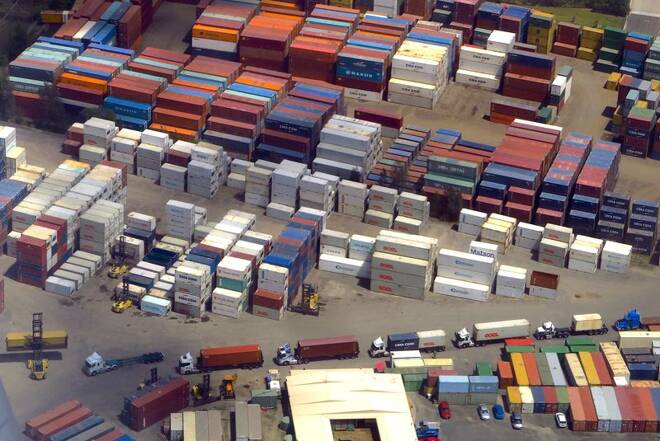Advertisement
Advertisement
Australia Q1 GDP up in the air as strong demand sucks in imports
By:
SYDNEY (Reuters) - Australia's current account surplus shrank unexpectedly in the first quarter as companies paid out fatter dividends to offshore investors, while import volumes far outstripped exports taking a chunk out of economic growth.
By Wayne Cole
SYDNEY (Reuters) -A surge in Australia’s imports in the first quarter and surprising strength in government spending and inventories have added to uncertainty over this week’s reading on gross domestic product (GDP).
The current account surplus shrank unexpectedly, data showed on Tuesday, as the jump in imports took a chunk out of economic growth, although that was balanced by the strength in government spending.
The opposing forces complicated forecasts for Wednesday’s GDP, which had been expected to show growth of 0.7% for the quarter and 3.0% for the year.
Both would be a slowdown from the previous quarter when re-opening from coronavirus lockdowns unleashed a boom in activity.
A raft of data from the Australian Bureau of Statistics out showed Australia’s current account surplus shrank to A$7.5 billion ($5.38 billion) in the March quarter, well short of forecasts of A$13.4 billion.
Part of the pullback was due to a 12% jump in imports, particularly cars, while companies also paid out fatter dividends to offshore investors.
As a result, net exports will subtract 1.7 percentage points from GDP, above forecasts for a 1.4 percentage point drag.
However, that was offset by a 2.5% jump in government spending which will add 0.7 percentage points to growth.
Private inventories also topped forecasts as firms looked to build stocks as a bulwark against disruptions in global supply chains, adding 0.6 percentage points to GDP.
The quarter was already very mixed with widespread flooding and an Omicron coronavirus wave hitting activity, but cashed-up consumers still splashing out on goods and services.
“Pent-up consumer demand, an elevated household saving ratio and a strengthened household balance sheet, as well as the boost from earlier stimulus which has the unemployment rate down at the lowest level since 1974, are all supportive of increased spending this year,” said Andrew Hanlan, a senior economist at Westpac.
He sees the economy growing around 4.5% this year before slowing to 2.5% in 2023 as higher interest rates bite.
The Reserve Bank of Australia (RBA) this month lifted rates by 25 basis points to 0.35% as it sought to contain an unexpected surge in inflation, which reached a 20-year high of 5.1% in the first quarter.
Markets are priced for another rise to 0.60% at the RBA’s June policy meeting next week, and a string of hikes to around 2.5% by the end of the year.
Most analysts argue this is too aggressive given households hold a record A$2 trillion in mortgage debt and will be exposed to rising borrowing costs.
Data from the RBA on Tuesday showed the stock of home loans was expanding at an annual pace of almost 8%, well above growth in household incomes.
($1 = 1.3939 Australian dollars)
(Reporting by Wayne Cole; Editing by Kim Coghill and Richard Pullin)
About the Author
Reuterscontributor
Reuters, the news and media division of Thomson Reuters, is the world’s largest international multimedia news provider reaching more than one billion people every day. Reuters provides trusted business, financial, national, and international news to professionals via Thomson Reuters desktops, the world's media organizations, and directly to consumers at Reuters.com and via Reuters TV. Learn more about Thomson Reuters products:
Advertisement
